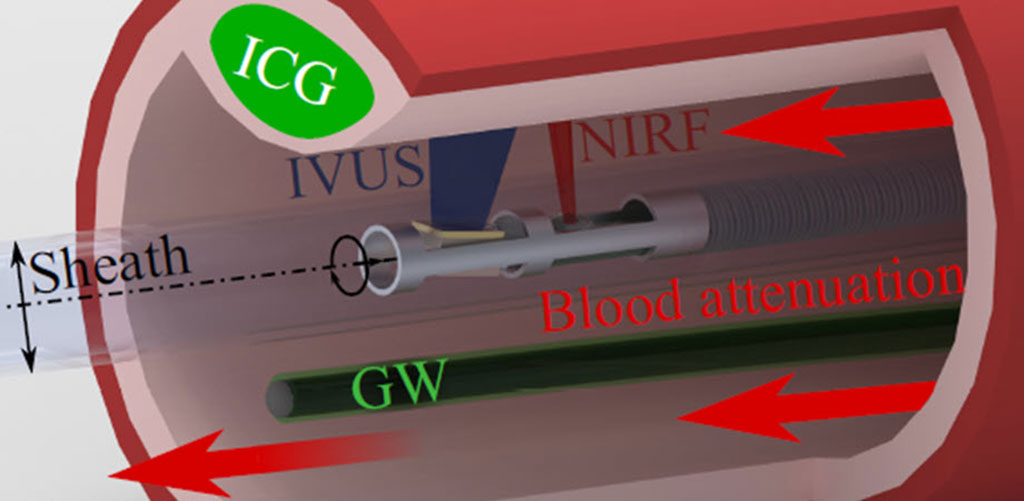New Method Improves Accuracy of NIRF-IVUS Measurements in Cardiovascular Imaging
Posted on 17 Apr 2023
Intravascular ultrasound (IVUS) allows cardiologists to capture images of blood vessels' interiors using a slim ultrasound probe, which can then be used to assess issues like arterial thickening due to fat or plaque accumulation. Near-infrared fluorescence (NIRF) imaging is employed alongside IVUS for a more comprehensive evaluation of blood vessels. NIRF relies on fluorescent agents that highlight biological processes within the body. When injected into the bloodstream, these agents bind to specific pathology-related compounds on vessel walls, such as proteins or nucleic acids. The resulting fluorescence signals are combined with IVUS images for enhanced accuracy. However, during NIRF-IVUS measurements, the distance between the NIRF detector and the blood vessel wall continually changes. This presents a challenge, as blood attenuates the fluorescence signals' intensity, and the "amount" of blood between the NIRF detector and the vessel wall constantly varies.
A team of researchers led by the Technical University of Munich (TUM, Munich, Germany) has come up with an innovative solution to this problem. In a study, the team created a new technique to measure blood's fluorescence attenuation using a "guidewire" that moves the NIRF-IVUS probe. The concept is based on the constant visibility of the guidewire to the NIRF probe. By coating the guidewire with a known concentration of fluorescent particles, the guidewire signal offers an indirect measure of blood attenuation in the current image. The distance between the NIRF probe and the guidewire, as well as the blood vessel wall, is determined via IVUS, allowing for the calculation of a correction factor for the fluorescence signal measured at the blood vessel wall after a simple calibration procedure.

The team tested their technique in a clinical model using a small NIRF-IVUS system from a previous study and conducted experiments on capillary phantoms, which mimic small blood vessels' properties. They observed a 4.5-fold improvement over uncorrected NIRF signals and <11% errors for target signals, showing great promise. The correction method also maintained a mean accuracy of 70% in tissue experiments. These figures are significantly better than those achieved by other correction methods that use average attenuation factors instead of calculating them for each frame and precise probe-to-vessel distances measured via IVUS. The researchers believe that incorporating their technique into clinical practice should be relatively straightforward since no major modifications to existing equipment are necessary. With the appropriate coatings, the guidewire can serve as a reference standard for other intravascular fluorescence imaging modalities and optical methods beyond fluorescence.
“This new method for correcting intravascular NIRF signals is simple and accurate and could pave the way for in vivo studies and eventual clinical translation,” said Brian Pogue, Professor of Medical Physics at the University of Wisconsin-Madison.
Related Links:
TUM














